It was really simple to get a little procedural sphere going from a cube, just keep subdividing each face into 4 smaller faces. After thinking about it, I don't think I needed to do anything special to create a planet model because if I texture it with 3 dimensional Perlin noise even a sphere model with a lot of pinching would be fine - anyways, texturing a sphere is for another day. Here are some of my results, FPS doesn't seem to get affected until I get to a level of detail of 5 and then it all goes pear-shaped fast.... well egg-shaped as you'll see...
All bar the last run at 60 FPS (I have vsync on so we can safely assume that the actual FPS is more like 60,000,000 FPS). The last one runs about 30 FPS but this is all pure software, I haven't done anything yet to optimise. Level 6 runs about 7 FPS and level 7... What happened to level 7???
In my sheer brilliant-ness I must have implemented astrophysics while I wasn't really concentrating, this mass of matter is obviously collapsing on itself and probably would implode... and if it ran faster than 1 FPS I'm sure it would look fecking awesome, but I didn't stick around to find out.
So after optimising the sphere stuff a bit, next I'll try to create some textures with Perlin Noise. I get how it works, I'm just a little confused as to how to implement it efficiently. For 2D textures, I have an image that's stretched over the terrain and I give texture coordinates to each point so DirectX does the rest. I can visualise how a 3D Perlin Noise texture looks (like a solid cloud, any slice will create coherent texture and so would a sphere carved out of that material) - but I've no idea how to tell DX about it. I may have to go with colouring each vertex, and then stretching a detail map over it all, but that seems to me like it would look like all kinds of shittyness unless I go to a level of detail so high my planet turns into an egg.
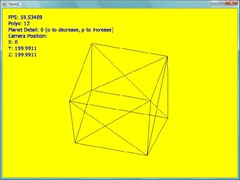

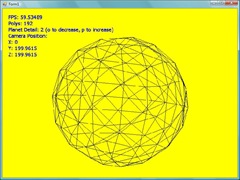
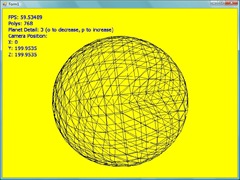
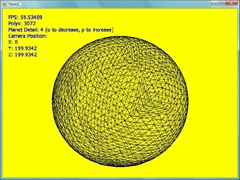
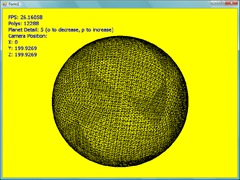
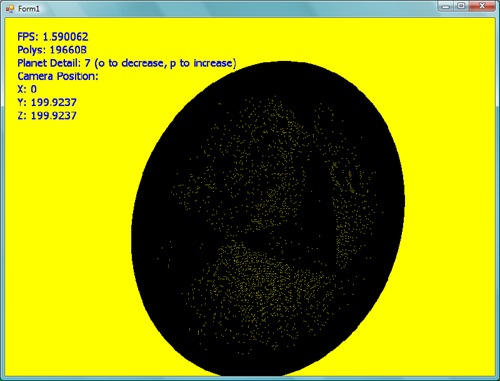
1 comment:
Hey, I'd be interested to see your algorithm for procedurally generating the sphere. I don't quite understand how you do the subdivision. Would you care sharing?
Thanks in advance,
David.
Post a Comment